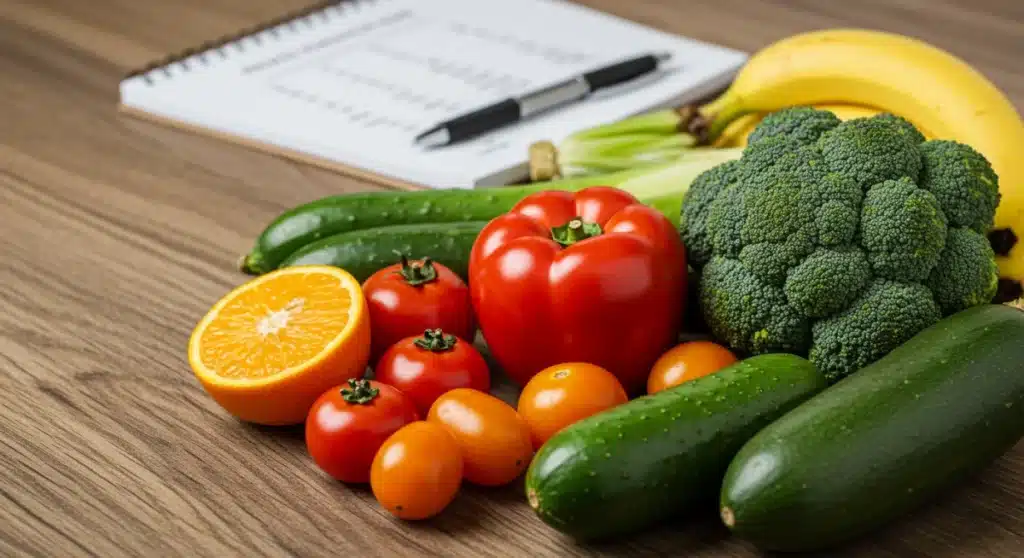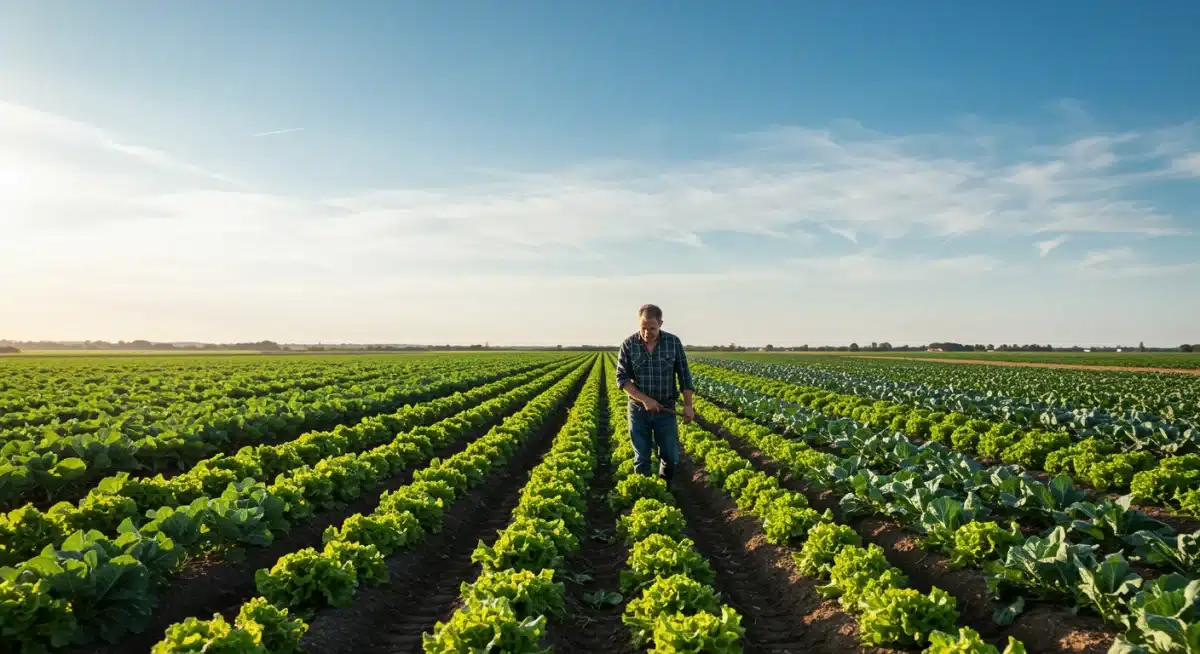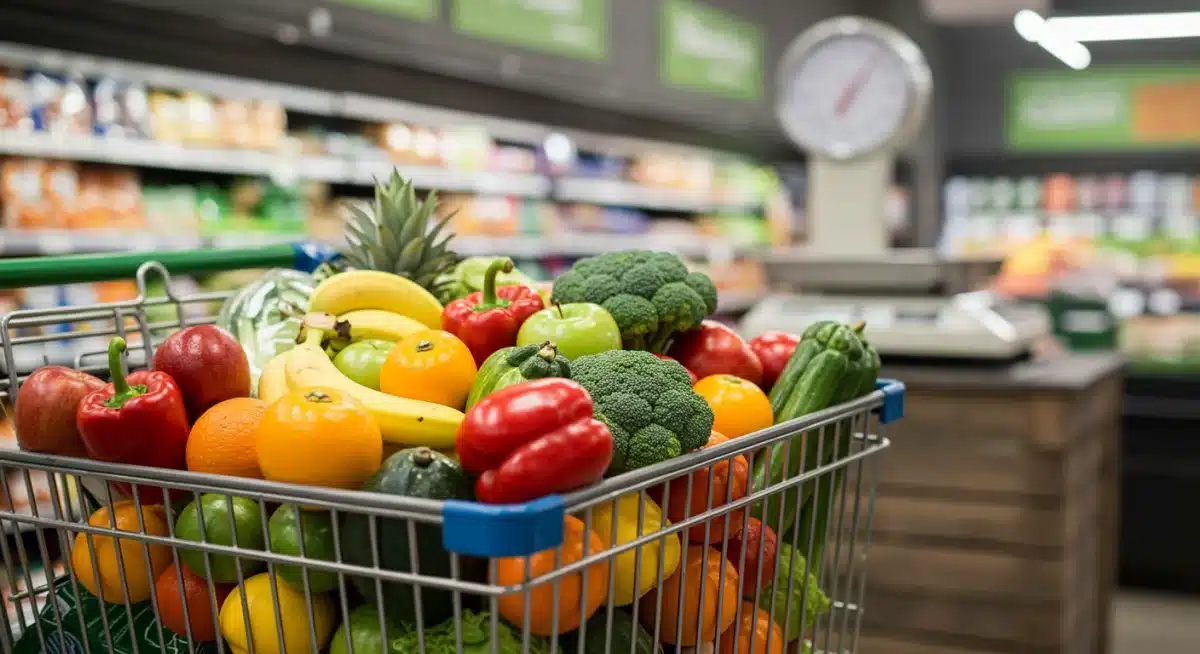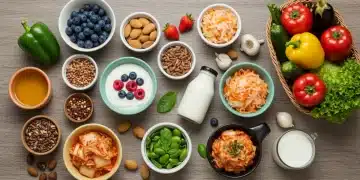Are Organic Foods Worth It? Nutritionist’s 2025 Insights

Advertisement
A nutritionist’s perspective for 2025 reveals that while organic foods offer various benefits, their ‘worth’ is multifaceted, encompassing nutritional value, environmental considerations, and personal budget constraints.
In an era where health and sustainability are increasingly prioritized, the question, “Are organic foods worth it? A nutritionist’s perspective for 2025” becomes more relevant than ever. Many consumers find themselves at the crossroads of nutritional science, environmental consciousness, and personal finance when navigating grocery aisles. With evolving agricultural practices and a continuously expanding market for organic products, understanding the true value behind the organic label is crucial for making informed dietary choices for your family.
Advertisement
Understanding the Organic Label in 2025
The term ‘organic’ is often used interchangeably with ‘healthy’ or ‘natural,’ but its meaning is far more specific, especially in the context of agricultural standards for 2025. Organic certification in the United States, managed by the USDA, dictates a strict set of rules for how foods are grown, processed, and handled.
These regulations cover everything from soil quality to pest control, ensuring that synthetic pesticides, herbicides, and fertilizers are largely avoided. For animal products, organic means no antibiotics or growth hormones, and animals must have access to the outdoors. This rigorous process aims to minimize human exposure to synthetic chemicals and promote ecological balance.
What Defines USDA Organic?
The USDA Organic seal is a guarantee that a product has been produced in accordance with federal organic standards. This involves a comprehensive system of production, processing, and handling that relies on natural substances and physical, mechanical, or biologically based farming methods.
Advertisement
- No Synthetic Pesticides or Fertilizers: Organic farming prioritizes natural pest control and soil enrichment methods.
- No Genetically Modified Organisms (GMOs): Organic products are strictly prohibited from containing GMOs.
- Animal Welfare Standards: Organic livestock must be raised with access to pasture and without antibiotics or growth hormones.
- Annual Inspections: Organic farms and processors undergo yearly inspections to ensure compliance with standards.
The integrity of the organic label is maintained through these stringent checks and balances, offering consumers a level of assurance regarding the product’s origin and production methods. Understanding these foundational principles is the first step in determining if the added cost of organic foods aligns with your values and health goals.
Nutritional Superiority: Fact or Fiction for Organic Foods?
One of the most debated aspects of organic foods revolves around their nutritional content. Many consumers believe organic produce and meats are inherently more nutritious than their conventional counterparts. However, the scientific evidence on this topic remains complex and often contradictory, making it a key point for any nutritionist’s perspective in 2025.
While some studies suggest slight differences in certain nutrients, a definitive consensus on widespread nutritional superiority has yet to be reached. The variations often depend on soil quality, climate, and specific farming practices, rather than solely on the ‘organic’ label itself. For example, some organic fruits and vegetables may have higher levels of antioxidants due to the plants’ natural defenses against pests without synthetic aid.
Key Nutritional Considerations
When evaluating the nutritional profile, it’s important to look beyond broad claims and consider specific nutrients. While the overall macronutrient content (carbohydrates, proteins, fats) is generally similar between organic and conventional foods, micronutrients and phytochemicals might show subtle differences.
- Antioxidants: Some research indicates higher levels of certain antioxidants in organic produce, which are beneficial for fighting oxidative stress.
- Omega-3 Fatty Acids: Organic dairy and meat products, particularly from grass-fed animals, may contain higher levels of beneficial omega-3s.
- Vitamins and Minerals: Studies have shown mixed results, with some finding slightly higher levels of certain vitamins (like Vitamin C) in organic produce, while others find no significant difference.
From a nutritionist’s viewpoint, the primary benefit often isn’t a dramatic increase in vitamins, but rather the reduction in exposure to pesticides and other synthetic compounds. This aspect, rather than a significant nutritional boost, frequently drives recommendations for opting for organic choices, especially for families with young children or individuals with compromised immune systems.
Pesticide Exposure and Health: A Critical Look
Perhaps the most compelling argument for choosing organic foods centers on reducing exposure to synthetic pesticides. Conventional farming relies heavily on these chemicals to protect crops from pests and diseases, and residues can often be found on or in produce. For many, minimizing this intake is a primary motivator, and a nutritionist’s perspective in 2025 strongly considers this point.
While regulatory bodies set maximum residue limits (MRLs) for pesticides, ensuring they are generally safe for consumption, the long-term effects of cumulative exposure, especially across a lifetime, are still areas of ongoing research. Children, due to their smaller body size and developing systems, are often considered more vulnerable to potential pesticide impacts.
Understanding Pesticide Risks
Pesticides are designed to be toxic, and while their use is regulated, concerns persist about their potential effects on human health, including neurodevelopmental issues, hormone disruption, and increased risk of certain cancers. Organic farming, by eschewing synthetic pesticides, offers a clear alternative for those seeking to reduce this exposure.
- “Dirty Dozen” and “Clean Fifteen”: These lists, updated annually by the Environmental Working Group (EWG), highlight produce with the highest and lowest pesticide residues, respectively, guiding consumers on when to prioritize organic.
- Cumulative Exposure: The concern isn’t always about a single pesticide residue, but the combined effect of multiple residues from different foods over time.
- Vulnerable Populations: Pregnant women, young children, and individuals with certain health conditions may be more sensitive to pesticide exposure.
While washing conventional produce can help remove some surface residues, many pesticides can be absorbed into the fruit or vegetable itself. Therefore, for families particularly concerned about chemical intake, investing in organic options for items on the “Dirty Dozen” list can be a practical and impactful choice, aligning with a preventative health approach.
Environmental Impact and Sustainability of Organic Farming
Beyond personal health, the environmental footprint of our food choices is an increasingly important factor, and organic farming often presents itself as a more sustainable option. From a holistic nutritionist’s perspective in 2025, the broader ecological implications of food production cannot be overlooked when assessing the value of organic foods.
Organic agriculture emphasizes practices that promote ecological balance, conserve biodiversity, and protect natural resources. This includes building healthy soil through crop rotation and composting, reducing water pollution from chemical runoff, and fostering habitats for beneficial insects and wildlife. These practices contribute to a more resilient and sustainable food system for future generations.

Organic Practices for a Healthier Planet
The methods employed in organic farming are designed to work in harmony with nature, rather than against it. This approach leads to several environmental benefits that extend far beyond the farm gate.
- Soil Health: Organic practices like cover cropping and composting enrich soil, improving its structure and water retention, and reducing erosion.
- Biodiversity: By avoiding synthetic pesticides, organic farms support a greater diversity of insects, birds, and other wildlife.
- Water Quality: Reduced use of synthetic fertilizers and pesticides prevents chemical runoff from contaminating waterways.
- Energy Efficiency: Organic farming often uses less energy by relying on natural processes rather than energy-intensive synthetic inputs.
While organic farming isn’t without its own environmental considerations, such as potentially requiring more land for the same yield, its focus on natural cycles and reduced chemical dependency generally positions it as a more environmentally friendly approach. For consumers prioritizing ecological stewardship, the environmental benefits of organic foods can significantly contribute to their perceived worth.
Cost-Benefit Analysis: Is the Price Tag Justified?
The higher price point of organic foods is undeniably one of the biggest barriers for many consumers. A nutritionist’s perspective in 2025 must acknowledge the economic realities faced by families when making dietary decisions. Understanding why organic foods cost more and evaluating whether that extra expense aligns with personal values and budget is key.
Organic farming methods are often more labor-intensive and yield smaller harvests compared to conventional methods. The cost of certification, specialized equipment, and adherence to strict organic standards also contribute to the higher retail prices. However, the ‘benefit’ isn’t solely nutritional; it’s a blend of perceived health advantages, environmental impact, and support for sustainable agriculture.
Making Smart Organic Choices on a Budget
For those looking to incorporate more organic foods without breaking the bank, strategic shopping is essential. Prioritizing certain items and understanding where the biggest impact lies can help maximize the value of your organic purchases.
- Prioritize “Dirty Dozen” Items: Focus your organic budget on fruits and vegetables known to have higher pesticide residues, as identified by the EWG.
- Buy In-Season and Local: Organic produce that is in season and sourced locally can often be more affordable and fresher.
- Consider Frozen Organic: Frozen organic fruits and vegetables are often more cost-effective than fresh, especially when out of season, and retain their nutritional value.
- Grow Your Own: For the ultimate cost-saving and control, consider starting a small organic garden.
Ultimately, the justification of the organic price tag is a personal decision. For some, the peace of mind regarding reduced pesticide exposure and supporting environmentally friendly practices outweighs the additional cost. For others, a balanced approach that includes both conventional and strategic organic choices might be more feasible, yet still highly beneficial for health and well-being.
Integrating Organic into a Family-Friendly Diet for 2025
For families, integrating organic foods into a daily diet requires thoughtful planning and a balanced approach, balancing health goals with practical considerations. A nutritionist’s perspective for 2025 emphasizes that while organic choices can be beneficial, the overall quality and variety of a family’s diet are paramount. It’s not just about organic versus conventional, but about nutrient density, whole foods, and mindful eating habits.
Making healthy food accessible and appealing to all family members, from babies to teenagers, is a primary goal. This means considering how organic options fit into meal planning, budgeting, and even involving children in the selection and preparation of food. The aim is to foster a healthy relationship with food, regardless of the organic label.

Practical Tips for Families
Navigating the organic market for a family doesn’t have to be overwhelming. Here are some actionable strategies to help incorporate organic choices effectively and sustainably:
- Focus on Whole Foods: Prioritize organic whole grains, fruits, vegetables, and lean proteins, which form the foundation of a healthy diet.
- Read Labels Carefully: Understand what organic claims mean and don’t be swayed by ‘natural’ labels that aren’t regulated.
- Involve Children: Let children participate in choosing organic produce at the store or farmer’s market to increase their interest in healthy eating.
- Cook at Home: Preparing meals at home allows greater control over ingredients, whether organic or conventional, and is generally healthier than eating out.
The goal is to create a diet rich in diverse, nutrient-dense foods. If organic options are within reach, they can certainly enhance a family’s nutritional intake and reduce exposure to unwanted chemicals. However, if budget constraints are a concern, focusing on a wide variety of fruits, vegetables, and whole grains, regardless of their organic status, remains the most impactful strategy for overall family health and well-being in 2025.
| Key Point | Brief Description |
|---|---|
| Organic Certification | Strict USDA standards govern organic production, ensuring no synthetic pesticides or GMOs. |
| Nutritional Value | Slight differences in some nutrients, but primary benefit is reduced pesticide exposure. |
| Environmental Impact | Organic farming promotes soil health, biodiversity, and reduced chemical runoff. |
| Cost vs. Benefit | Higher cost due to intensive methods; prioritize “Dirty Dozen” for budget-conscious choices. |
Frequently Asked Questions About Organic Foods
Scientific research on the superior vitamin and mineral content of organic foods compared to conventional ones is mixed. While some studies suggest slight increases in certain nutrients like antioxidants, there’s no widespread consensus on a dramatic nutritional advantage across the board. The main benefit from a nutritionist’s view is often the reduced exposure to synthetic pesticides.
Organic farming generally employs practices that are more environmentally friendly, such as improved soil health, increased biodiversity, and reduced water pollution from chemical runoff. However, specific environmental impacts can vary depending on factors like transportation distance and local farming practices. Buying local and in-season, whether organic or conventional, can also significantly reduce environmental footprint.
Organic meats and dairy products come from animals raised without antibiotics or growth hormones and often have access to pastures. This can result in higher omega-3 fatty acid content in some organic dairy and grass-fed meats. The absence of routine antibiotics also addresses concerns about antibiotic resistance, making them a preferable choice for many consumers.
To incorporate organic foods economically, prioritize items on the “Dirty Dozen” list, which are known for higher pesticide residues. Buying organic produce when it’s in season or opting for frozen organic options can also be more cost-effective. Joining a local CSA (Community Supported Agriculture) or growing some of your own food can also help manage costs.
No, ‘natural’ and ‘organic’ are not interchangeable. The term ‘natural’ is largely unregulated by the FDA and generally means that a food contains no artificial ingredients or added colors, and is minimally processed. However, it does not guarantee anything about pesticide use, GMOs, or animal welfare standards, which are strictly regulated under organic certification.
Conclusion
From a nutritionist’s perspective for 2025, the question of whether organic food worth the investment is not a simple yes or no. It’s a nuanced decision influenced by a confluence of factors including personal health priorities, environmental consciousness, and financial feasibility. While organic foods may not always offer a dramatic nutritional superiority, their primary benefits lie in reduced exposure to synthetic pesticides and the support of more sustainable agricultural practices. For families, a balanced approach often proves most practical, emphasizing a diet rich in whole, unprocessed foods, and strategically incorporating organic options where they align best with individual values and budget. Making informed choices, whether organic or conventional, ultimately contributes to a healthier lifestyle and a more sustainable future.





